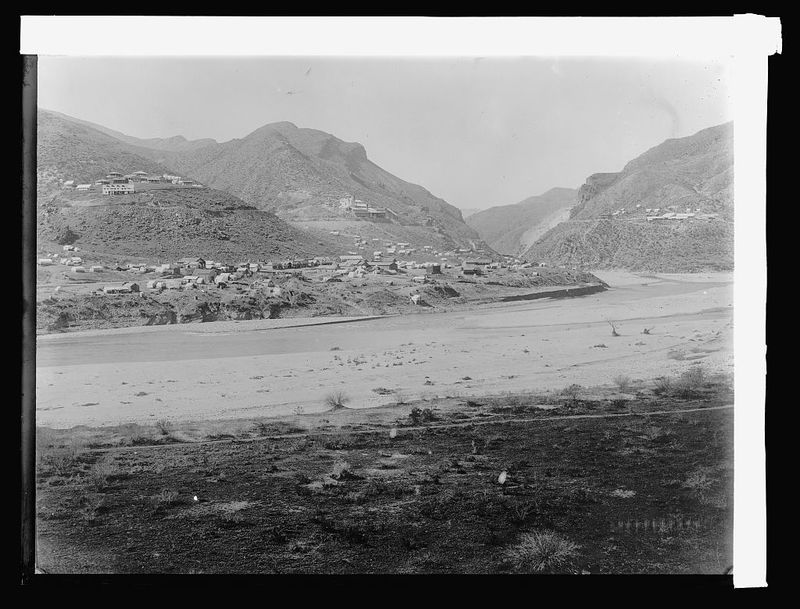
A pivotal feat of engineering in Arizona's history, navigating the challenges of river control and spurring economic development which supported the state's emergence in 1912.
Developed along the banks of the Salt River, the cities of Phoenix, Tempe, and Mesa, Arizona, both depended on the river and feared its seasonal flooding. Controlling the river emerged as a central challenge to economic development in the Salt River Dam. Construction of the Roosevelt Dam played an essential role in controlling the river and also represented significant investment by the federal government in the Arizona territory. It was no mistake that Arizona became a state in 1912, shortly after the dam was finished.
The origins of the dam begin with the need to tame the Salt River. With its origins in East-Central Arizona, at the intersection of the black and white river, the Salt River flows over 200 miles until it empties into the Gila River in Southeast Phoenix. Nearly two thousand years before any of Arizona's notable pioneers settled, an ancient Native American civilization known as the Hohokam built an irrigation-based civilization not far from its banks. After years of successful cultivation along the banks of the river, the Hohokam were ultimately pushed to near extinction by the cruel conditions of the desert and historically violent floods. Anglo settlers in the 19th century discovered the remnants of the Hohokam canal network and re-purposed it toward agriculture development of the valley. Soon early Anglo pioneers discovered the seasonal flooding that was so much a part of the Salt River ecosystem.
The development of Tempe owes at least part of its start to Charles Trumbull Hayden, when his journey northward was temporarily halted by a flooded Salt River. Upon climbing the Tempe Butte and consulting local Pima Indians, Hayden was impressed by the valley. He discovered that the Butte was the best point for crossing along the River and also to survey the expanse of the valley. Hayden saw an opportunity to build “an agricultural empire” in the desert. In the following years, his connection to the river and Hayden’s Ferry--now known as Tempe--would help drive the region to prosperity. For the Valley along the Salt River, the next twenty years are defined by the continuous debate over how best to reclaim the valley’s natural resources.
Charles Hayden and his son Carl Hayden emerged as leaders in the struggle to control the flow of water through the valley through irrigation, dams, and waterworks. For example, two years after his initial entrance into politics, Tempe Town Councilman, a young Carl Hayden became an early advocate for water reclamation when he wrote a letter to Arizona's Congressional delegate, J.T. Wilson, expressing his opinion that, "the chief interest of Tempe citizens lies in a system of water works". By 1902, Carl Hayden was twenty-five years old and lobbying on behalf of the oldest water source in the Valley: the Salt River. Members of the Salt River Valley Water Users’ Association (SRVWUA) were already seeking funds from Washington, which threatened the water rights of Tempe and the encompassing Phoenix area. Hayden spent weeks debating with locals about whether or not Tempe should join the SRVWUA, even complaining to his mother that, “The situation is so complex that I doubt if I could explain it all in forty type-written pages”. After realizing a federal project would be built with or without the consent of the city, the citizens agreed to join. Despite his reluctance towards the trip, Carl Hayden and representatives from Tempe left for Washington.
In 1902, Theodore Roosevelt passed the National Reclamation Act of 1902. A year later, Carl Hayden was informed that the newly founded Bureau of Reclamation deemed the creation of Roosevelt Dam in Arizona to be its first project. The creation of the dam was an effort to combat the unpredictability of flooding and dry seasons along the Salt River by regulating the water going to the valley and creating a reservoir to save water in times of drought, while the hydroelectric plant was intended to cut the costs of the local farmers. After a coalition of Arizona farmers put up their land as collateral, the United States Government approved the building of the Roosevelt Dam for construction in 1905.
The Roosevelt Dam encouraged the economic and urban growth of Arizona, and, while also serving as a political stepping stone for Carl Hayden, who would return to Washington 10 years later as the state’s first Congressman. Originally estimated to take only two years to construct, the dam was finished six years later at a cost of over $3.3 million. Setbacks ensued when floods washed away construction and materials, however their efforts were eventually solidified after 344,000 cubic yards of masonry stone and cement were laid, thus creating the largest manmade lake of the time: Roosevelt Lake. This 280 ft. tall, 723 ft. wide dam began operation in 1911, one year before Arizona became a state. By that time it provided water to over 30,000 farms and quality hydroelectric power that would not be offered elsewhere in the country for another 10 years. This structure, and others following along the Salt River, allowed Phoenix to blossom into the ‘agricultural empire’, originally envisioned by Hayden. Over the next 100 years, water reclamation in Arizona allowed Phoenix to become one of the largest producers of vegetables and grains in the West.
Images




Date: May 1940
